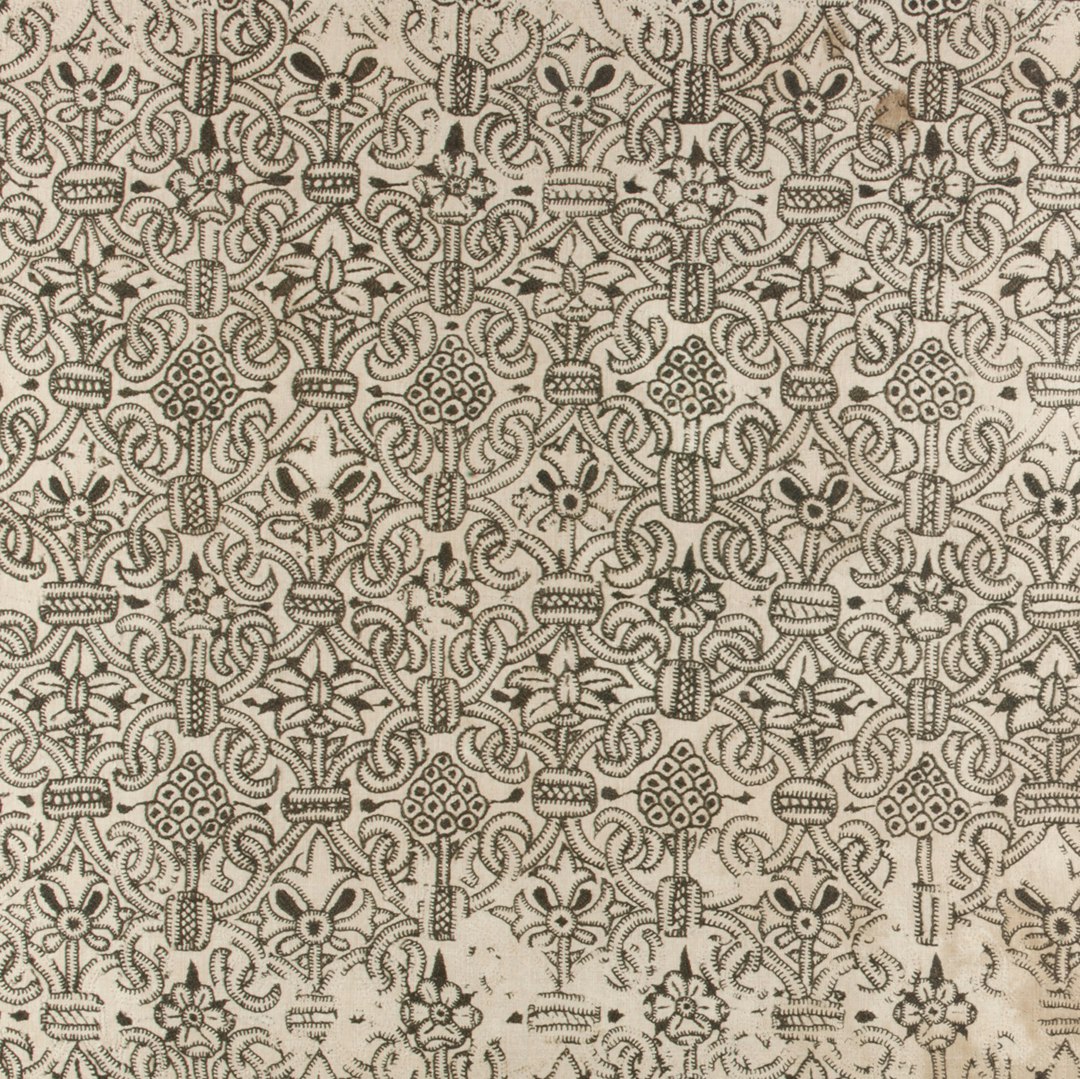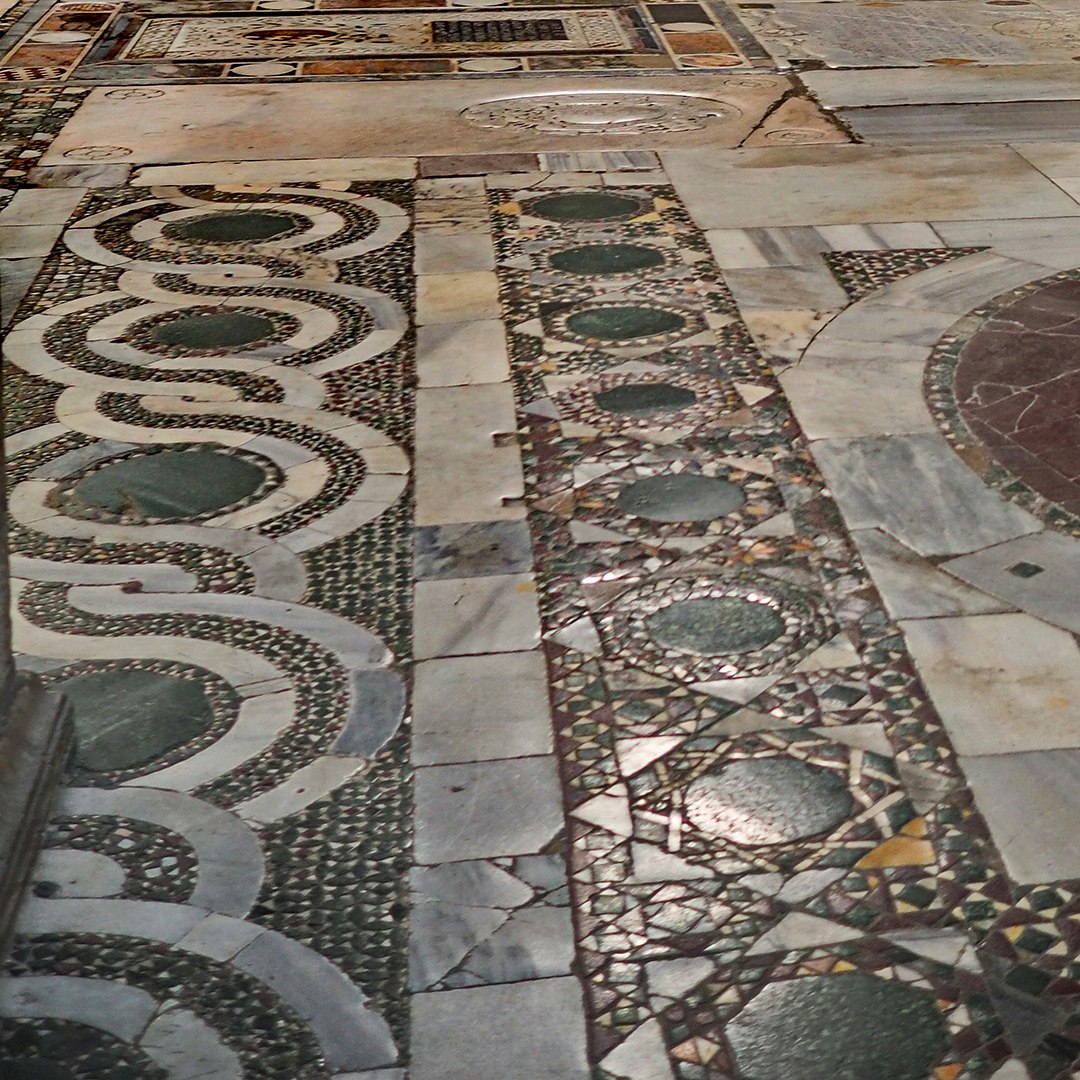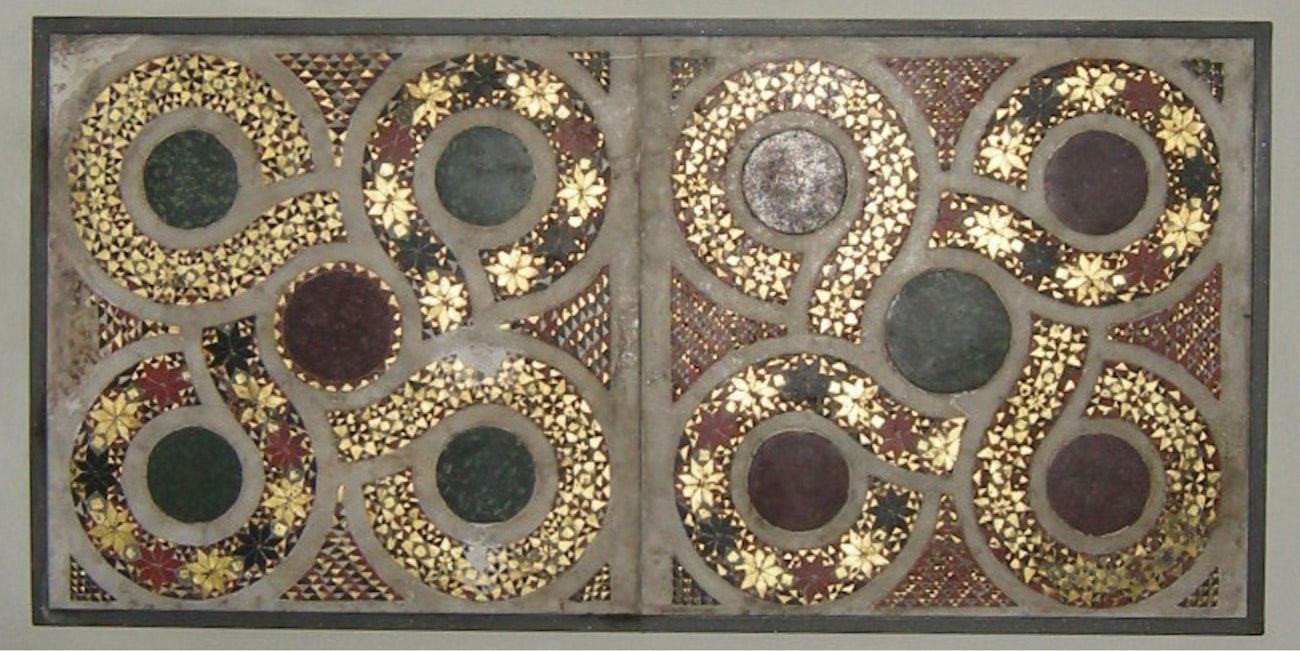Blackwork embroidery, with its recognizable style of flowing shapes that are created by combining straight lines and geometric figures, is an ideal medium in which to interpret architectural detail and stonework.-editor
 Title: Panel of blackwork,1580–1620, British, Linen worked with silk thread; buttonhole, cross, outline, and herringbone stitches, H. 17 1/4 x W. 21 in. (43.8 x 53.3 cm), Textiles-Embroidered, Rogers Fund, 1935, 35.21.3. Photo courtesy of The Metropolitan Museum
Title: Panel of blackwork,1580–1620, British, Linen worked with silk thread; buttonhole, cross, outline, and herringbone stitches, H. 17 1/4 x W. 21 in. (43.8 x 53.3 cm), Textiles-Embroidered, Rogers Fund, 1935, 35.21.3. Photo courtesy of The Metropolitan Museum
On May 6, 2023, King Charles III will be crowned on the Great Pavement of Westminster Abbey, a magnificent carpet of geometric design in the form of an intricate double quincunx. It is a superb example of “Cosmati” work, a particular kind of mosaic work created not with small square pieces of glass, but in coloured materials—marble, stone, glass, and metal—in the shape of triangles, rectangles, squares, circles, pointed ovals, rhomboids, and other geometric shapes. Apart from Edward V who was never crowned and Edward VIII who abdicated before his coronation, every British monarch has been crowned on this symbolic site since its completion in 1268.
 Cosmati work can be seen in many religious sites around the world. Santa Maria in Aracoeli in Rome. Photo courtesy of Wikipedia Commons
Cosmati work can be seen in many religious sites around the world. Santa Maria in Aracoeli in Rome. Photo courtesy of Wikipedia Commons
The pavement is the only example known to have had an inscription inlaid in it in the form of a riddle linked to a particular span of time which some say foretells the end of the world. Although most of the brass letters which made up the inscription are no longer visible in the pavement, the text has been handed down to us through a record of the inscription made by John Flete in the 15th century.
In the year of Christ one thousand two hundred and twelve plus sixty minus four, the third King Henry, the city, Odoricus and the abbot put these porphyry stones together. If the reader wisely considers all that is laid down, he will find here the end of the primum mobile; a hedge (lives for) three years, add dogs and horses and men, stags and ravens, eagles, enormous whales, the world: each one following triples the years of the one before. The spherical globe here shows the archetypal macrocosm.
But there’s more to it than that.
The design is a map of universal harmony which can be read clearly if you know the symbolic language in which it is expressed. At the center of the design is a circle of onyx marble, probably imported from Egypt and specially selected for having four colours (yellow, orange, pink, gray) which symbolize the four elements (fire, air, water, earth) all mixed together, as yet undifferentiated. It stands for “unformed matter,” stable in eternity. The ritual anointing of the monarch takes place on this spot. It symbolizes the maintenance of cosmic order in and through the person of the monarch via the institution of the monarchy. The central circle is bordered by a serpentine band which loops outwards four times to surround four smaller circles, both separating them from the center and joining them to it. The four circles, which are positioned to the four cardinal points, each contain a different shape. Each shape stands for one of the four elements in its differentiated form. To the east, a circle: air. To the west, a hexagon: earth. To the north, for complex symbolic reasons, a septagon: water. To the south, an octagon: fire.
 Not only is cosmati work unique, it stands the test of time. This work from Cosmatesque mosaic in the Baptistry in the Cathedral of Siracusa, Italy dates from the 12th century. Photo courtesy of Wikipedia Commons
Not only is cosmati work unique, it stands the test of time. This work from Cosmatesque mosaic in the Baptistry in the Cathedral of Siracusa, Italy dates from the 12th century. Photo courtesy of Wikipedia Commons
Follow the encircling band around, and you’ll trace two of the four primary qualities each element shares. The border around the eastern air circle comes from fire carrying heat, and travels towards water which is moist. Water joins moisture and cold. Earth, cold and dryness. Fire, dryness and heat. Here, the elements are in balance, but in ideal states. At the next level, time unfolds from the perpetual to the temporal. All of the filling patterns in the hexagons within circles between the cardinal points at the next level feature partial motifs, giving the impression of the patterns continuing indefinitely beyond the boundaries of their containing shapes.
The pavement has been the inspiration for a number of textile and embroidery projects, including my own blackwork embroidery design, “Medieval Majesty.”
Leon Conrad is a specialist in historic needlework techniques and known particularly for historically-styled blackwork embroidery designs. He has exhibited widely,demonstrated, and taught classic embroidery techniques for various branches of The Embroiderers’ Guild (UK), The Historic Needlework Guild (USA), The Knitting and Stitching Shows and Madeira Embroidery Shows (UK), A Sampler Gathering (USA), Ackworth School Sampler Guild (UK), The V&A Museum, The National Maritime Museum, The National Trust and English Heritage. To book him for a lecture, demonstration, or class, contact here.

